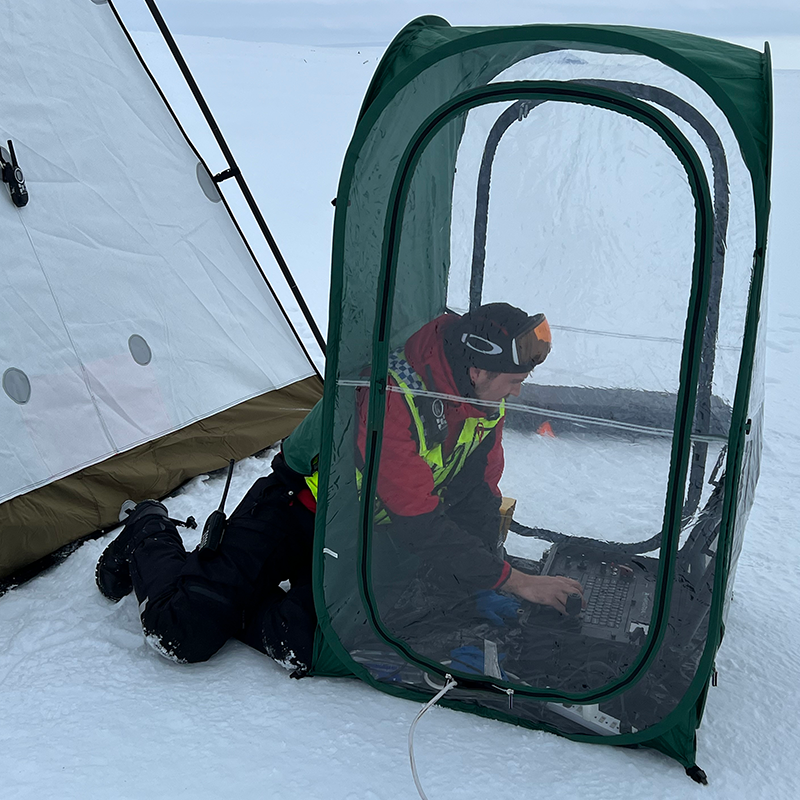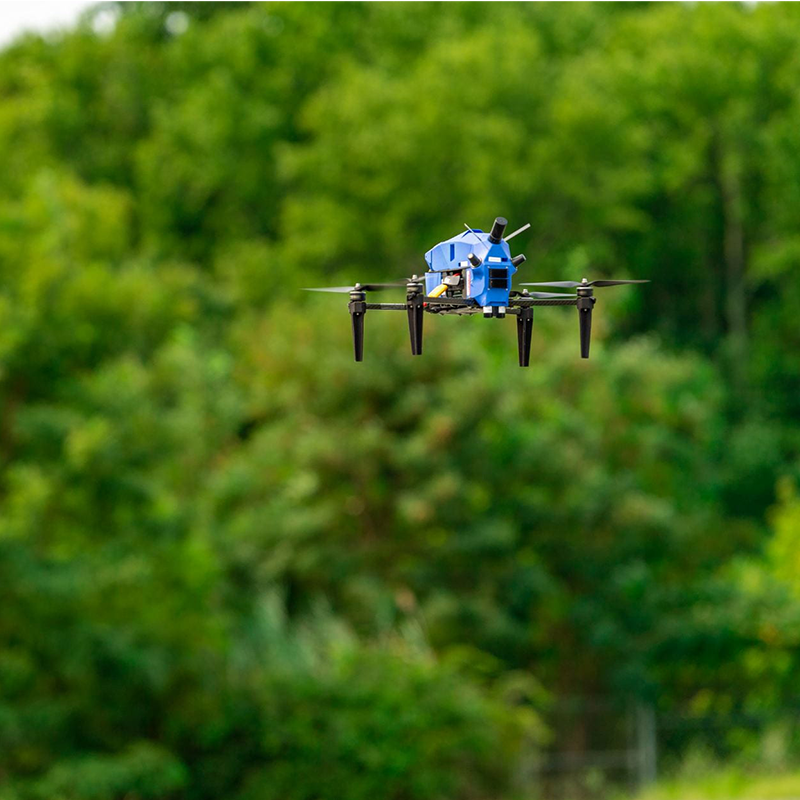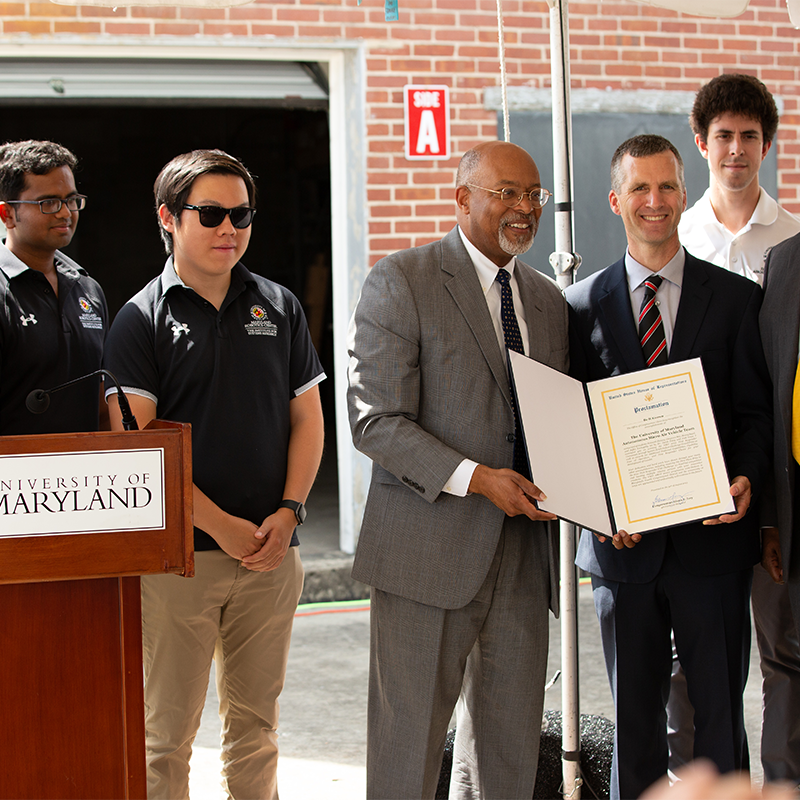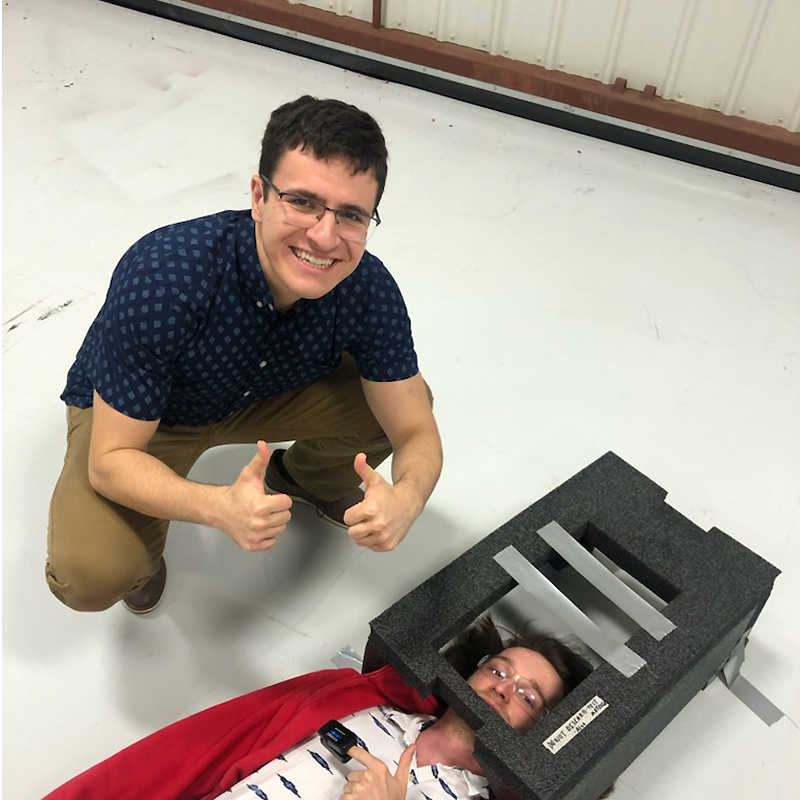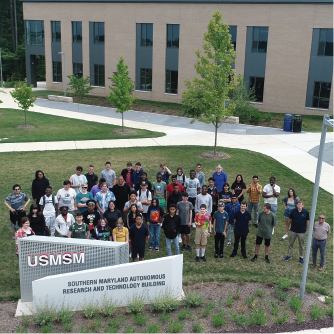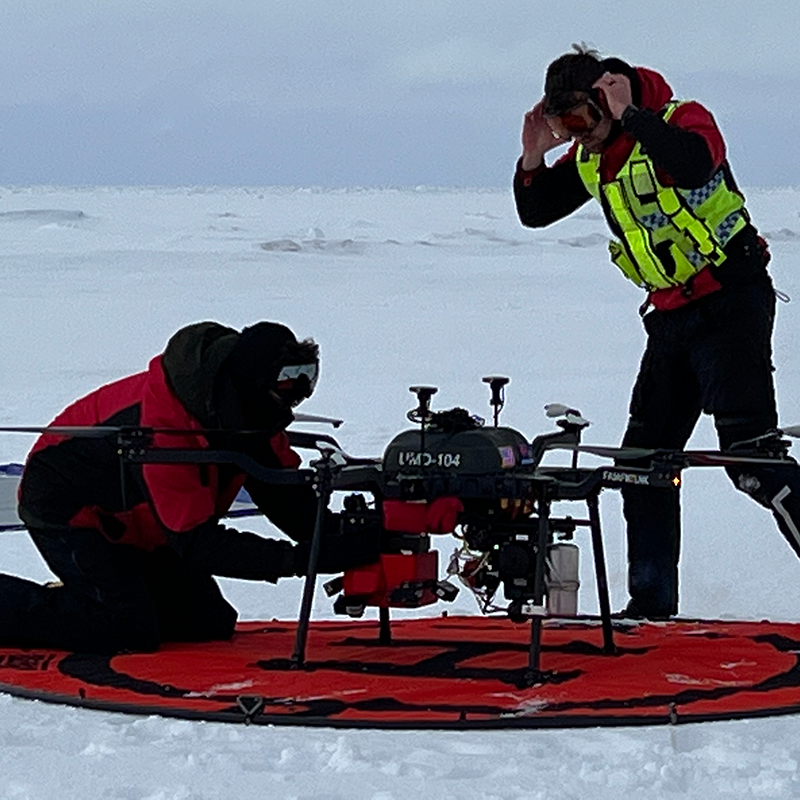News Story
UROC Establishes Safety Management System
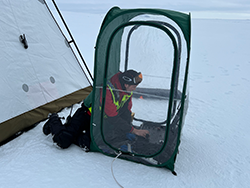
Grant Williams, UAS Operator at the UMD UAS Research and Operations Center, operates an uncrewed aircraft during extreme temperatures in Nome, Alaska.
A Safety Management System (SMS) is a mandatory requirement for U.S. airlines, and the burgeoning use of uncrewed aircraft systems—popularly known as “drones”—makes it likely that the commercial UAS world will also adopt such an approach in the future.
Among those leading the way is the University of Maryland’s (UMD) UAS Research and Operations Center, which launched a comprehensive SMS earlier this year.
An SMS is a “formal, top-down approach to managing safety risk and ensuring the effectiveness of safety risk controls” said Jim Alexander, UROC’s chief of safety. “It protects the organization and the people who work for it.”
Any SMS, he explained, comprises four pillars: safety policy, including written policies, procedures, and organizational structure; safety risk management, which involves identifying hazards, assessing risks, and implementing risk controls; safety assurance, which is a data-driven process intended to measure the effectiveness of the risk controls; and safety promotion, which includes messaging, training, and maintenance of a positive safety culture.
“All flying involves risk, but it’s important not to accept any unnecessary risk,” said Alexander. A risk assessment matrix is used prior to conducting any drone flight operations to identify hazards and possible outcomes of those hazards, then determine an overall risk level for each potential outcome. When the risks are understood, appropriate risk controls or mitigations can be implemented. This is critical since the UROC team often travels to remote locations, including recent trips to Australia, New Zealand, and Alaska.
"All flying involves risk, but it’s important not to accept any unnecessary risk.”
Jim Alexander, UROC Programs Director and Chief of Safety.
UROC also has a robust safety training program, with modules tailored to specific team member roles. All personnel, for instance, learn how to keep the aircraft hangar safe to prevent accidents, as well as the fundamentals of first aid and CPR. The operations team, meanwhile, receives specific training related to flight operations and piloting skills. This includes crew resource management training, designed to help them utilize all available resources–people, equipment, and information–to help ensure safe and efficient operations by reducing human error. Because drone operators work with highly flammable lithium batteries, the safety program also includes dangerous goods shipping training.
Other components of the UROC SMS include safety posters and promotional materials, as well as weekly reviews of a UAS incident report filed with the NASA Aviation Safety Reporting System or a UAS accident report in the National Transportation Safety Board (NTSB) database. The latter includes the most serious events, such as destroyed aircraft, while the NASA database typically covers less severe ones–though these, Alexander stressed, often shed light on problems that could lead to a major accident if not addressed.
"It’s like an iceberg with only the tip visible above water,” he said. “The NTSB reports represent the few accidents at the tip, but all the below-water things in the NASA reports–the close calls, the human errors, the could-have-been-accidents-but-weren’t–need to be understood and addressed to prevent the really bad things from happening.”
While many aspects of an SMS can be specified and written down, one of the most important aspects–fostering a safety culture–is less tangible and has to grow organically within the organization, he said, with reinforcement at every opportunity and a shared commitment among team members.
And while it still may be years before the FAA issues a mandate for UAS operators to implement an SMS, having one in place yields obvious benefits, Alexander said.
“Whether it’s a requirement or not, it’s a good thing to do,” he said. “We all want to go home safely to our families every night, and the SMS helps ensure that we do.”
Published December 13, 2023


